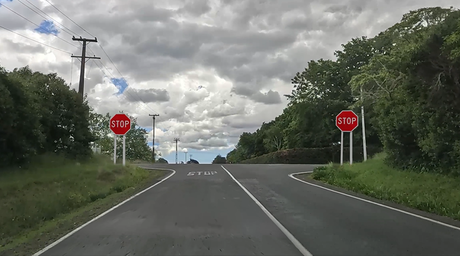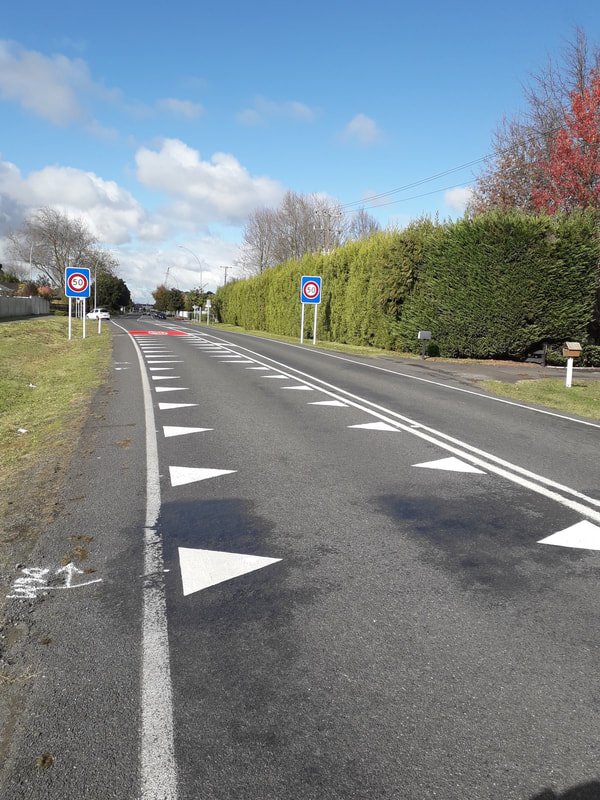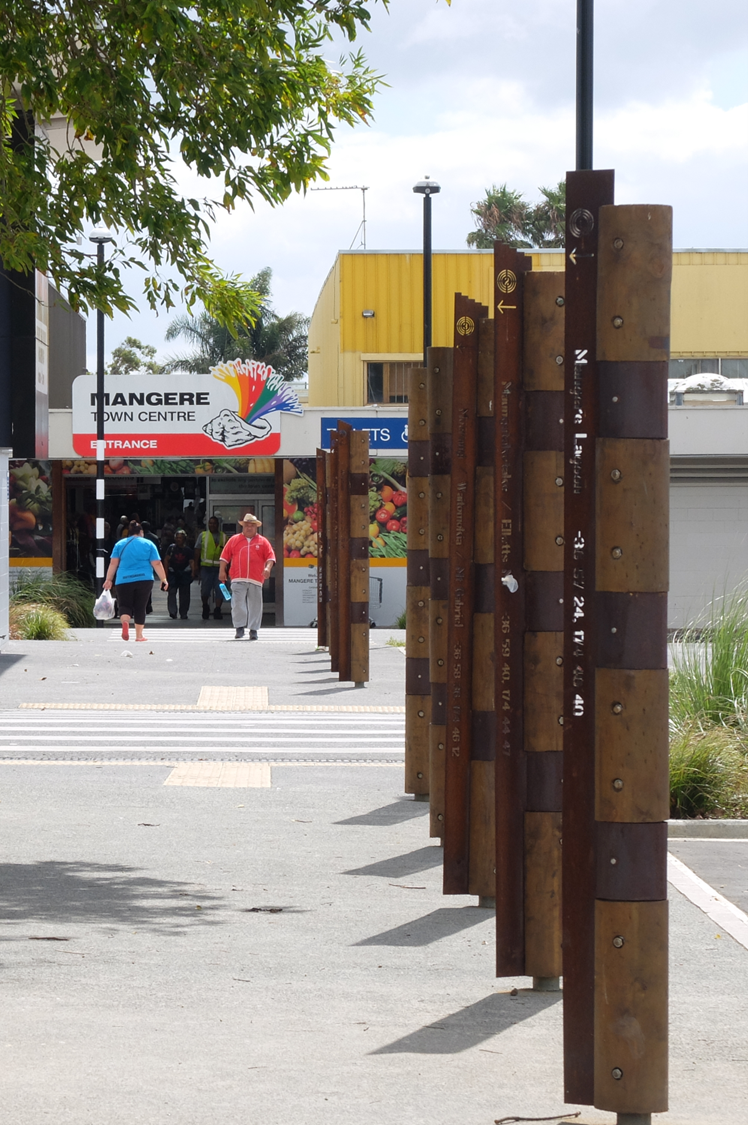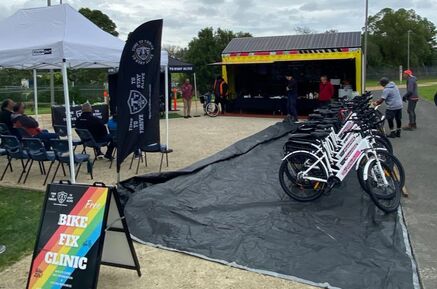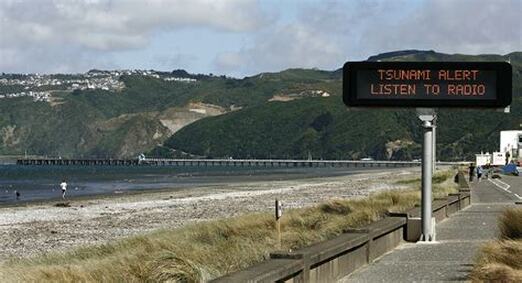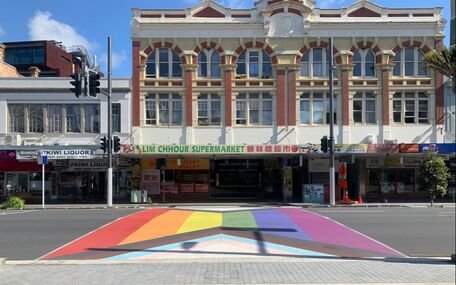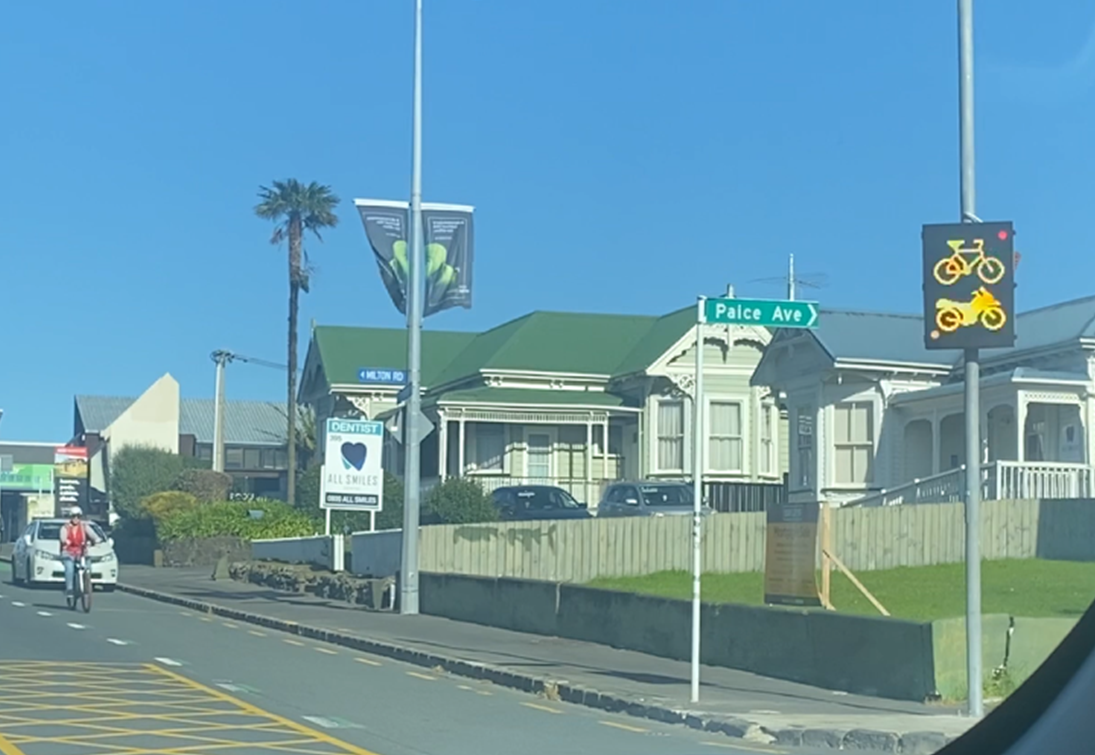Examples of Current and Recent Projects
|
Rural Crossroads
The Mackie Research team are working with the AA Research Foundation (AARF) to address safety at rural crossroads in NZ. In recent years, several serious crashes have occurred at rural crossroads caused by drivers failing to stop or give way. Due to the speeds involved, these crashes have resulted in serious injuries and fatalities. Waka Kotahi have been working on this, and our current AARF human factors research supports this work. Mackie Research are undertaking a two-phase project. The first phase involved detailed safe system/human factors reviews of rural crossroad crashes to better understand common causal factors (e.g., road geometry, signage and markings, or driver characteristics). Based on the findings of this review, and expert feedback, the team are now completing a trial using digitally altered video of NZ roads. The goal of the trial is to better understand what types of road signage and markings are visible and attention grabbing for drivers approaching a rural crossroad. Waka Kotahi Streets for People Evaluation
Waka Kotahi’s Streets for People programme (2022-24) will support local authorities and communities to find easier, quicker ways to reallocate street space for active mobility networks. Mackie Research has worked with Waka Kotahi to develop an evaluation framework for the programme. The team are now working collaboratively with Waka Kotahi and project providers to implement the evaluation framework through the entire course of the Streets for People programme. Contextual Factors in Driving for Work Crashes
Work-related road traffic fatalities are understood to make up around a third of all worker fatalities as well as a third of the national road toll. The project aims were to determine the Safe System factors associated with fatal, serious injury, and minor injury crashes that occurred in light and other selected vehicles while driving for work, and explore socio-technical methods for analysing driving for work crashes or crash clusters. See the report here Dragons Teeth Road Markings Trial
Mackie Research was commissioned by Waka Kotahi to work withseveral NZ Road Controlling Authorities (RCAs) to evaluate the impact of Dragons teeth road markings on vehicle speed and motorist awareness/alertness. Dragons Teeth are a low-cost road marking treatment intended to alert drivers that they need to reduce speed and be aware of other road users, for example, at rural/urban thresholds or school/shopping areas. The team used a range of evaluation approaches at 13 test sites around NZ including, on-road speed tubes, video data collection, a road user trial, and crash report analyses. Palmerston North Bridge Illumination
As part of their Manawatū River Loop Illumination Project, the Palmerston North City Council is considering illuminating the parts of Fitzherbert Bridge visible from a shared pathway that links Fitzherbert Bridge and the new pedestrian and cyclist bridge downstream, He Ara Kotahi. The purpose of this project is to help the council identify conditions where the lighting is unlikely to distract people driving vehicles on roads near the bridge. Te Ara Mua - Future Streets - MBIE
Te Ara Mua – Future Streets is an exciting project to make streets in Māngere Central safer and easier for people to travel around, especially by walking or cycling.The project involves making changes to some of the roads and connections in Mãngere Central and introducing other activities to promote walking and cycling. Read More |
Ngā Tiriti Ngangahau – Māngere ebike trial
Mackie Research, along with partners Massey University, Time to Thrive and key stakeholders Auckland Transport, Waka Kotahi, and the Māngere Otahuhu Local Board have now completed the three-stage Māngere ebike trial. Read more here Managing Vehicle-Related Risks from Supply Chain Pressures
Work-related vehicle incidents are a major health and safety burden to both workers and the public in New Zealand and overseas. Given the wide ranging and complex arrangements of vehicle use within supply chains, a ‘system’ approach was needed to determine solutions that are most likely to address the context that drives harm, and hence have the greatest chance of being effective. This project involved an evidentially based investigation of approaches to managing risks across the supply chain, Using a highly participatory research method, the project was designed to build on existing and new programmes of work by industry and New Zealand agencies. Rasmussen’s Socio-Technical System Framework was used as a conceptual framework ensuring the research considered the interconnected nature of contextual factors and all relevant system levels. The report concludes with 13 system focused recommendations to minimise vehicle-related harm across supply chains. Read the full report here The Gig Economy and Road Safety Outcomes
Mackie Research is undertaking a project for Waka Kotahi focused on road safety and gig working. The aim is to better understand the road safety implications resulting from transport related gig economy work and what has been done to mitigate identified risks in other jurisdictions. The team is using a range of techniques to gather the knowledge and perspectives of stakeholders including, literature review, interviews with sector experts and surveys and ethnographic observations of gig workers. This will provide Waka Kotahi with a socio-technical understanding of road safety problems that arise from gig work and where intervention is likely to be most effective. Pictures and Colours on Variable Message Signs
Waka Kotahi is currently upgrading Variable Message Signs (VMS) on our roads with new signs that can display coloured fonts, backgrounds, and pictograms. The goal of this project is to help Waka Kotahi better understand how the new display capabilities can be used to assist drivers, and where they might present a safety risk. The knowledge gathered provided input into an early-stage trial considering how pictograms on VMS affect sign comprehension time. Reducing Harm in the Horticulture Sector
In partnership with Horticulture NZ, Mackie Research is working to build capability in harm reduction and health and safety leadership across the Horticultural sector. As the sector works on reducing injuries and preventing deaths, they have recognised the need to better understand how and why harm occurs and to build knowledge of new systems-based harm reduction approaches. The team is working with industry experts in gaining a fuller picture of the sector including where interventions could be most impactful, developing practical tools, sharing knowledge and resources, and building cross-sector communities of practice that will enhance workplace health and safety nationally. Read report here Roadway Art Evaluation
Mackie Research was commissioned by Waka Kotahi to evaluate the road safety and placemaking performance of roadway art that has been installed in New Zealand since the Traffic Control Device (TCD) rule change in 2020). The team undertook speed data analyses, video observations of road user behaviour and interviews/surveys with project teams, drivers, pedestrians, and disability representatives. They were able to pinpoint several ‘key learnings’ that can be used to enhance future decision-making regarding roadway art installation. Trial of Safety Countermeasures for Motorcycles and Bicycles at Urban Intersections - Auckland Transport
We have been working with Auckland Transport to evaluate the effectiveness of road bike and motorcycle safety an unsignalized intersections on Dominion Road. Auckland Transport has treated some intersections with the goal of improving visibility of cyclists and motorcyclists to turning vehicles. For treatment and control intersections on Dominion Rd in Auckland, data was collected at baseline and following yellow hatching only, before active warning signs were installed to warn turning drivers of oncoming motorcyclists and cyclists. The measures are now being repeated following the installation of the warning signs that are now active. The measures include road user speed and behaviour as well as different levels of interaction between cyclists/motorcyclists and other road users using a human factors framework. Focus Groups have also been conducted to determine how drivers are likely to perceive and react to the new signs. The trial and research is due for completion in September. |

